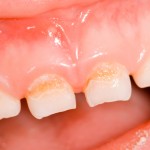
Globally caries is one of the commonest diseases of childhood. Prevention of caries require good oral hygiene, good diet and regular use of fluorides. Recently the World Health Organisation (WHO) has added fluoride toothpaste and topical fluorides to their ‘Essential medicines list for Children.’ Previous reviews of fluoride varnish have demonstrated caries preventive effects in the primary dentition (Dental Elf – 3rd Jul 2019 & 12th July 2013) while other studies have shown other topical agents solutions, gels, foams, or self-applied toothpaste and mouth-rinse to prevent caries. While some direct comparison studies have been conducted no indirect comparisons have.
The aim of this review was to compare the caries preventive effectiveness of topical fluorides in the primary dentition using a network meta-analysis approach.
Methods
Searches were conducted in the Cochrane Library, Medline/PubMed, Embase, Scopus, LILACS, CINHAL, Web of Science, www.clinicaltrials.gov and http://opengrey.eu databases. Two reviewers independently searched for and selected studies extracted data and assessed risk of bias using the Cochrane risk of bias tool (RoB 2). Randomised controlled trials (RCTs) in children under the age of 6 comparing any topical fluoride against another form of topical fluoride, placebo or no intervention with a minimum of 12 months follow up and published in English were considered. A network meta-analyses (NMA) was carried out with the effect size measures as mean difference (MD) with 95% confidence interval (CI). The certainty of the evidence was assessed using the Grading of Recommendations Assessment, Development, and Evaluation (GRADE) approach.
Results
- 24 RCTs reported in 27 papers involving a total of 20,133 patients were included.
- The studies were conducted in 16 countries between 1978 and 2019.
- 17 of the studies were considered to be at high risk of bias and 7 at low risk.
- 15 studies evaluated professionally applied fluorides and 9 self-applied fluorides.
- Of the 15 professionally applied, 11 involved varnishes, 2 used 9% difluorosilane (DFS), one 23% acidulated phosphate fluoride foam (APF) and one amine fluoride. 6 studies using varnishes demonstrated a significant effect. 5 did not. One of the DFS studies showed significant caries reduction the other did not while both APF foam and amine fluoride demonstrated caries protective effects.
- 7 of the 9 self-application studies involved toothpastes the other studies involving fluoride gels in trays. 6 studies found that low fluoride toothpastes were not significantly less effective than high fluoride toothpaste in preventing caries
- 10 professionally applied fluoride RCTs contributed to the NMA.
- C – 0.9% DFS (1000 ppm F) varnish 3-monthly, D – 5% NaF (22,600 ppm F) varnish 6-monthly
- The NMA cumulative and SUCRA rankings for the interventions are shown in the table below.
| Cumulative ranking | Surface Under the Cumulative Ranking (SUCRA) |
| 0.9% DFS 3-monthly | 0.9% DFS 3-monthly |
| 0.5% amine fluoride 1-monthly | 0.5% amine fluoride 1-monthly |
| 0.5% amine fluoride 2-monthly | 1% amine fluoride 2-monthly |
| 1% amine fluoride 2-monthly | 0.5% amine fluoride 2-monthly |
| 5% NaF 6-monthly | 5% NaF at 6-month and 1.23% APF 6-monthly |
| 5% NaF once per year | 0.9% DFS 6-monthly. |
| 1.23% APF 6-monthly | |
| 0.9% DFS 6-monthly. |
- The certainty of the evidence ranged from very low to moderate.
Conclusions
The authors concluded: –
Prevention of early childhood caries can be achieved by the use of various professionally-applied and self-applied topical fluorides. Compared to a non-fluoride control, the professional application of 0.9% difluorosilane at 3 months was the most effective in preventing ECC according to the ranking of interventions. However, the evidence was inconclusive for self-applied topical fluoride due to the large variations in the reporting of studies and ‘very low’ to ‘moderate’ for professionally applied topical fluoride interventions. Thus, the review recommends future good- quality studies comparing two or more of these interventions with adequate follow-up to enhance the credibility of conclusions among different interventions for topical fluorides.
Comments
The authors have registered their protocol on the PROSPERO database and searched a good range of international databases. However, they have limited their inclusion to English language studies which may have excluded some relevant studies. They do note though that some studies have indicated that this may have little impact on the summary treatment effects. While 24 studies have been included a majority (17) were considered to be at high risk of bias which should be borne in mind when considering the findings. In addition, a NMA was only conducted for the professionally delivered interventions and only 10 studies could be included. As a result, no evaluation of effect modifies such as caries diagnostic criteria, baseline disease levels, fluoride dosage or fluoride content of the drinking water could be conducted. It should also be noted that the top 3 in the SUCA ranking have been informed by a single trial. Future studies need to be well conducted and reported in line with SPIRIT and CONSORT guidelines. No studies involving silver diamine fluoride (another of the WHO essential dental medicines) which may have a role in caries prevention in the primary dentition but is more usually used to arrest decay (Dental Elf – 15th Aug 2018)
Links
Primary Paper
Manchanda S, Sardana D, Liu P, Lee GH, Li KY, Lo EC, Yiu CK. Topical fluoride to prevent early childhood caries: Systematic review with network meta-analysis. J Dent. 2021 Nov 12;116:103885. doi: 10.1016/j.jdent.2021.103885. Epub ahead of print. PMID: 34780874.
Other references
Dental Elf – 3rd Jul 2019
Fluoride varnish for caries prevention in pre-school children
Dental Elf – 12th Jul 2013
Updated review confirms substantial reductions in caries from fluoride varnish applications
Dental Elf – 15th Aug 2018
Silver diamine fluoride for caries prevention in primary teeth
WHO Model List of Essential Medicines for Children – 8th list, 2021
